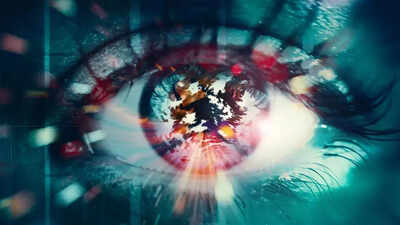Have you ever wondered if your perception of reality is truly in sync with the present? A groundbreaking study from 2022, published in Science Advances, suggests that what we experience as the present moment is actually a carefully constructed illusion. Researchers have found that your brain might be presenting you with a visual representation that is up to 15 seconds behind real-time. This fascinating phenomenon, highlighted by Popular Mechanics and UNILAD Tech, reveals that our brains seamlessly blend past visual information to create a stable and coherent view of the world around us. In essence, we may be constantly experiencing a version of the past, meticulously edited by the brain to feel like the immediate "now." Let's delve into how this process works and why it occurs.

The human brain doesn't process visual information instantaneously. Instead, it employs a strategy of delaying and merging images from the recent past to generate a stable and smooth perception of our surroundings. Scientists have termed this effect a "previously unknown visual illusion," a protective mechanism that shields us from the potentially overwhelming chaos of moment-to-moment perception.
This delay isn't a flaw but rather a crucial survival adaptation that enables us to effectively manage the constant influx of sensory input in a dynamic environment. Consider the rapid changes that constantly occur around you – flickering lights, shifting shadows, moving objects, or the quick movements of your own eyes. If the brain attempted to process each change in real-time, it would quickly become overloaded.
To prevent this sensory overload, your brain employs a process known as serial dependence. This process blends what you are currently seeing with what you have seen in the recent past. This technique results in visual smoothing, providing you with the impression of a calm, unchanging scene. In essence, your brain prioritizes stability and peace of mind over absolute precision.
The research indicates that our brains rely on visual snapshots from up to 15 seconds in the past. Consequently, what you perceive as the "present moment" is essentially an edited replay of earlier visual data.
This delay allows us to function effectively in a constantly fluctuating environment by preventing cognitive fatigue. It serves as a form of biological buffering, akin to your brain continuously editing a video, replaying the last few seconds to ensure seamless continuity. This isn't a mere glitch; it's a significant evolutionary advantage. By prioritizing consistency over hyper-accurate real-time feedback, the brain enables us to:
In today's fast-paced world, this smoothing effect ensures that our attention isn't hijacked by every minor alteration in our environment.
This discovery challenges a core concept in mindfulness and philosophy – the idea of being fully present. If our visual reality is rooted in the past, then the "now" we believe we inhabit is not truly present. It's a curated experience shaped by our brain's memory and guesswork.
This raises several thought-provoking questions:
You’re seeing the past — and your brain doesn’t want you to know.
Newer articles
 ‘Ghar ki murgi daal barabar’: Virender Sehwag’s son recalls father’s humorous words – Watch
‘Ghar ki murgi daal barabar’: Virender Sehwag’s son recalls father’s humorous words – Watch
 5 essential insects that protect your plants and reduce garden pests
5 essential insects that protect your plants and reduce garden pests
 Rishabh Pant Redefining Cricket, Says Greg Chappell
Rishabh Pant Redefining Cricket, Says Greg Chappell
 Warning Signs: 5 Prediabetes Symptoms to Watch For (No Blood Test Needed)
Warning Signs: 5 Prediabetes Symptoms to Watch For (No Blood Test Needed)
 Bangladesh Coach Simmons to Temporarily Leave Sri Lanka Tour for Medical Check-up
Bangladesh Coach Simmons to Temporarily Leave Sri Lanka Tour for Medical Check-up
 Sanjog Gupta Named New ICC Chief Executive Officer, Set to Lead Global Cricket Expansion
Sanjog Gupta Named New ICC Chief Executive Officer, Set to Lead Global Cricket Expansion
 SA20 Auction: Teams Allowed to Retain Up to Six Players Amidst Purse Increase and New RTM Card Introduction
SA20 Auction: Teams Allowed to Retain Up to Six Players Amidst Purse Increase and New RTM Card Introduction
 Elon Musk's first Neuralink implant allows paralysis patient to play games and…
Elon Musk's first Neuralink implant allows paralysis patient to play games and…
 Tiêu đề: Brain's Eye View: Study Shows We Perceive Reality 15 Seconds Late
Tiêu đề: Brain's Eye View: Study Shows We Perceive Reality 15 Seconds Late
 Udaipur: Unveiling India's Romantic "City of Lakes and Palaces"
Udaipur: Unveiling India's Romantic "City of Lakes and Palaces"